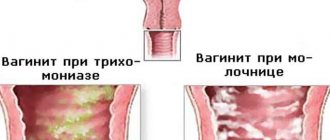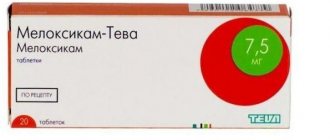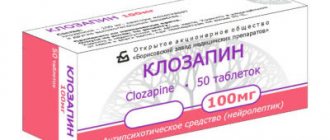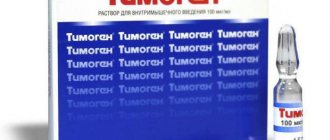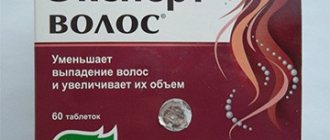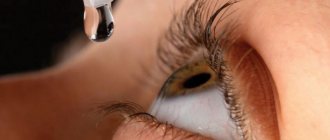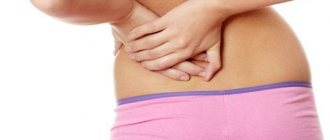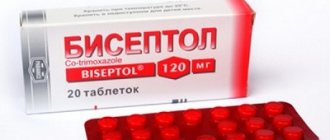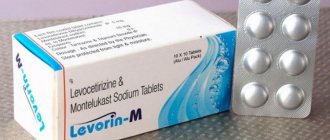- July 16, 2019
- Other drugs
- Natalia Balagurova
As can be seen from the instructions, “Efferalgan Upsa” is prescribed when there is a high temperature and the need for pain relief. This drug is effective thanks to paracetamol in its composition. Before taking the medicine, you need to read its instructions. Let's consider the features of effervescent tablets and the rules for their use, then we will turn to some aspects of the use of other forms of release of the drug "Efferalgan".
Compound
paracetamol as an active ingredient , as well as additional components: anhydrous citric acid, sodium bicarbonate, anhydrous sodium carbonate, povidone , sodium docusate, sodium saccharinate, sodium benzoate.
Efferalgan syrup contains the active ingredient paracetamol, as well as additional components: sugar syrup, macrogol 6000 , citric acid, sodium saccharinate, flavoring, purified water.
Efferalgan suppositories contain the active substance paracetamol, as well as semi-synthetic glycerides as additional components.
Kinetics: features
The instructions for use accompanying the Efferalgan Upsa effervescent tablets clarify the fact that an insignificant part of the active ingredient is metabolized during reactions requiring the participation of cytochrome P450. The result of this reaction combines with glutathione and is eliminated by urine. If a patient mistakenly takes too much of a drug, the amount of this metabolite increases significantly.
If the patient suffers from severe renal weakness, creatinine clearance does not exceed 10 units, the elimination of the drug and its transformation products slows down. The degree of conjugation does not depend on the age of the patient.
Effervescent tablets provide an analgesic effect faster than regular tablets.
Release form
- Effervescent tablets are white, round, flat in shape, with beveled edges and a line on one side. As the tablet dissolves in water, gas bubbles are actively released. Contained in strips of 4 pcs.
- Children's Efferalgan is produced in the form of syrup - a viscous solution, yellow-brown in color, with a caramel-vanilla aroma. Packaged in 90 ml bottles, a bottle and a measuring spoon are placed in a cardboard box.
- Rectal suppositories are white, glossy, smooth, contained in blisters of 10 pieces.
pharmachologic effect
Efferalgan UPSA has an antipyretic, analgesic, and mild anti-inflammatory effect on the body. Its mechanism of action is associated with the process of inhibition of prostaglandin synthesis. It has a predominant effect on the thermoregulation center in the hypothalamus .
Cellular peroxidases neutralize the effect of paracetamol on COX in inflamed tissues, as a result, the anti-inflammatory effect is very weak.
There was no negative effect on the processes of water-salt metabolism, as well as on the condition of the mucous membrane of the digestive tract due to the lack of impact on the synthesis of prostaglandins in peripheral tissues.
Pharmacology
The instructions accompanying Efferalgan indicate that the product belongs to the class of antipyretics. The drug is able to relieve pain and reduce fever. It inhibits the first and second types of COX. The action is mainly noticeable in the central nervous system. The active ingredient affects thermoregulatory and pain centers. In inflamed areas of the body, peroxidases do not allow paracetamol to act on COX, so the medication actually has no anti-inflammatory effect.
Observations have proven that the medicine does not impair the exchange of fluids and salts in the body and does not lead to sodium retention. It does not affect the gastric mucosa because it cannot control the generation of prostaglandins in the periphery. The chances of developing methemoglobin are assessed as extremely low.
Pharmacokinetics and pharmacodynamics
After Efferalgan has been taken orally, paracetamol is rapidly absorbed from the gastrointestinal tract, mainly in the small intestine by passive transport. After taking a single dose of 500 mg, the highest concentration in the blood plasma is observed after 10-60 minutes. It is well distributed in tissues and fluids, with the exception of cerebrospinal fluid and adipose tissue. It binds to proteins by less than 10%; with an overdose, this binding increases slightly.
Metabolism occurs mainly in the liver. The half-life is 1-3 hours. In patients with liver cirrhosis, the half-life increases. Renal clearance is 5%. It is mainly excreted through the kidneys in the form of glucuronide and sulfate conjugates. Less than 5% is excreted unchanged.
Kinetic parameters
The instructions for use accompanying the Efferalgan Upsa tablet clarify what reactions occur in the human body after taking the medicine. Studies have clearly shown that oral administration of paracetamol is accompanied by rapid absorption of this substance. The process is absolutely efficient. The maximum content in the blood serum is achieved half an hour or an hour after administration. Paracetamol is distributed throughout all tissues of the body. The content of the substance in blood serum, blood itself, and saliva is comparable. The ability to react with whey proteins is low.
Metabolic processes are localized in the liver. Paracetamol is excreted through urine. About 90% of the substance received by the body is excreted by the kidneys in the next 24 hours. The main form identified in urine is glucuronide conjugates. Their share accounts for 60-80%. Another 20-30% is eliminated in the form of sulfate conjugates. In the original form, less than 5% is eliminated. The half-life is two hours.
Indications for use
Effervescent tablets are used for moderate or mild pain:
- for headaches and toothaches;
- for migraines ;
- in case of pain in the lower back and muscles;
- for pain due to burns, injuries;
- with algodismenorrhea ;
- in case of elevated body temperature due to colds and other infectious and inflammatory diseases.
Efferalgan syrup is intended for the treatment of children aged 1 month to 12 years (respectively, weighing from 4 kg to 32 kg). Used in such cases:
- as an antipyretic drug for colds, acute respiratory infections , flu , infectious diseases, reactions after vaccine administration and other conditions in which there is an increase in body temperature;
- as an anesthetic drug for mild or moderate pain (headache, toothache, neuralgia , muscle pain, pain from burns, injuries).
Suppositories are used for pain syndromes of various origins, subject to mild and moderate pain, as well as for fever in patients with infectious and inflammatory diseases.
When will it help?
The instructions for “Efferalgan Upsa” are recommended for mild to moderate pain. It is prescribed if a tooth or headache hurts, if a person is worried about a migraine. The medication can be used in case of neuralgia, lumbar and muscle pain. The pharmaceutical product helps with burn pain and pain caused by injury. It eliminates sore throat and pain associated with the menstrual cycle.
The indication for the use of the medicine is elevated body temperature, if it is recorded due to an infectious process, inflammatory disease, or cold.
Contraindications
Efferalgan tablets are contraindicated for use in the following cases:
- for chronic alcoholism ;
- people with glucose-6-phosphate dehydrogenase ;
- in the first and third trimester of pregnancy, as well as during lactation;
- when the patient is under 15 years of age 9, provided that the person’s body weight is less than 50 kg);
- high sensitivity to the components of the product.
This drug is used with caution to treat patients with renal or liver failure, congenital hyperbilirubinemia , alcoholic liver damage, and viral hepatitis. You also need to be careful when treating elderly people.
Efferalgan syrup and suppositories are not used:
- for a child under 1 month of age;
- with high sensitivity to the components of the product;
- with liver and kidney failure;
- in case of blood diseases;
- with a lack of glucose-6-phosphate dehydrogenase .
The syrup is prescribed with caution to patients with diabetes mellitus . Suppositories are not used for children suffering from diarrhea .
About the dosage in more detail
Efferalgan syrup comes with a measuring spoon. The manufacturer strongly recommends using it in order to measure doses of the product accurately. On the spoon you can see 15 mg marks. There are unmarked divisions that are used if the patient's body weight is intermediate.
At the age of up to three months, the drug is prescribed by a doctor, who also determines the dose. The manufacturer does not provide any recommendations for this case. Children under five months of age (weight - 6-8 kg) are recommended to receive 3 ml of the drug. For age up to one year, weight up to 10 kg – 4 ml. For children under two years of age (weight up to 12 kg), 5 ml is recommended. At the age of three years it is recommended to receive 6 ml; for the age group up to four years (weight up to 16 kg) 7 ml.
For ages up to six years and weight up to 20 kg, 8 ml is allowed. Children under seven years of age are entitled to 2 ml more. At the age of up to eight years, take 11 ml of the drug, and from eight to nine – 12 ml. For children under ten years of age, 13 ml of the drug is allowed, for children under 11 years of age - 14 ml. Finally, for children under 12 years of age, 15 ml of medication is indicated.
"Efferalgan" can be given to children in its pure form, without diluting with water. If necessary, you can dilute the syrup with water or mix it with milk. Like adults, children are given medicine for no more than three days for fever and no longer than five days for pain. For a longer course, you need to consult a doctor. Keep in mind that the drug, although extremely rare, can still cause side effects.
Side effects
When treated with this drug, some side effects may develop:
- manifestations of allergies: itching, skin rash, Quincke's edema ;
- hematopoiesis: thrombocytopenia , anemia , methemoglobinemia - in rare cases;
- digestive system: diarrhea , nausea, abdominal pain, vomiting; when used for a long time, a hepatotoxic effect may develop;
- other manifestations: impaired renal and liver function - in case of prolonged use of large doses of the drug.
In the doses indicated in the instructions, it is usually well tolerated.
Undesirable effects
The instructions for use of Efferalgan Upsa indicate the possibility of side effects while taking the drug. In particular, there is a possibility of allergies. Intolerance to the composition is manifested by skin reactions (itching areas, rashes). There is a danger of angioedema. There are known cases of anemia and thrombocytopenia. Very rarely, taking the drug was accompanied by methemoglobinemia.
If the patient takes the drug for a long time, the risk of impaired renal and hepatic functionality increases. This is especially true in the case of unjustified excess of the dosage relative to the therapeutically effective one. The likelihood of violations arises if the doses used greatly exceed the norm. When such practices are identified, peripheral blood monitoring should be ensured.
When used in a reasonable dosage, the medicine is well tolerated.
Instructions for use of Efferalgan (Method and dosage)
Efferalgan effervescent tablets, instructions for use
Tablets should be taken orally, after dissolving one tablet in 200 ml. water. Take, according to the instructions, 1-2 tablets two to three times a day, with an interval of at least four hours. The permissible dose per day is 8 tablets of Efferalgan UPSA.
People with impaired renal or liver function, as well as elderly patients, need to reduce the daily dose of the drug, increasing the interval between taking tablets to 8 hours. You can take the medicine for five days, provided that the tablets are used as an anesthetic, and for three days as an antipyretic.
Instructions for syrup for children Efferalgan
When using Efferalgan syrup for children, parents must follow the instructions for use very carefully. When determining a single dose of the drug, you need to take into account the child’s body weight: the average dose is determined at the rate of 10-15 mg per 1 kg of the child’s weight 3-4 times a day, while the highest daily dose should be no more than 60 mg per 1 kg of the child’s weight.
An interval of 4-6 hours should be maintained between doses. It is most convenient to determine the required dose using the measuring spoon that comes with the medicine bottle. If a child is diagnosed with impaired renal function, the interval between doses should be increased to 8 hours.
You can use the syrup either undiluted or diluted with liquid milk, juice, etc.
The product can be used for three days to reduce body temperature and for 5 days as an analgesic. If you need to continue the duration of treatment, it is important to consult your doctor.
Instructions for candles
The instructions for Efferalgan suppositories for children provide for rectal use of suppositories. Suppositories of 150 mg and 80 mg are used. Adults and adolescents whose weight is more than 60 kg are prescribed a single dose of 500 mg; the drug can be taken no more than 4 times a day. You can use candles regularly for 5-7 days. The maximum daily dose is no more than 4 g of the product.
Children from 6 to 12 years old need to use a single dose of 250-500 mg, children from 1 to 5 years old - 120-250 mg, children from 3 months to 1 year - 60-120 mg. Children under 3 months should use baby suppositories at the rate of 10 mg per 1 kg of child weight. Suppositories can be used no more than 4 times per day, treatment can last no more than 3 days.
Terms of use
Instructions for use of "Efferalgan Upsa" describe how to use effervescent tablets correctly. One copy is dissolved in one glass of water. Immediately after dissolution, the liquid is drunk in one gulp. The medication is indicated for use one tablet or two at a time. Frequency per day – from two to three times. The pause between doses is four hours or more. The patient is allowed to receive no more than four grams of the active ingredient per day, that is, no more than eight tablets. You can take no more than two tablets at a time.
For elderly people, the dose is reduced. It is necessary to reduce the dosage in comparison with the standard one if the performance of the kidneys and liver deteriorates. All these categories of people are allowed to use the medicine less often than healthy people: the pause between doses varies from eight hours or more.
The duration of independent use of a pharmaceutical product as an analgesic without consulting a doctor is five days. If Efferalgan Upsa is used to bring down a fever, it is allowed to be taken for no more than three days in a row without consulting a doctor.
Overdose
In case of an overdose of the drug, the patient may experience nausea and vomiting, pale skin, anorexia, and hepatonecrosis. If an adult takes a dose of paracetamol more than 10-15 g, its toxic effect may occur. In particular, the activity of liver transaminases increases and prothrombin time increases. After 1-6 days, liver damage may appear. In rare cases, in case of overdose, fulminant development of liver failure has been observed, in which renal failure may develop as a complication.
In case of overdose, gastric lavage should be performed in the first six hours. After this, 8-9 hours after the overdose, donors of SH groups and precursors of glutathione synthesis - methionine, should be administered, and after 12 hours - N-acetylcysteine.
Further actions are determined by the level of paracetamol in the blood and how long after taking it.
Efferalgan effervescent tablets
Release form, composition and packaging
Effervescent tablets are white, round, flat, with beveled edges and a notch on one side; when dissolved in water, intense release of gas bubbles is observed.
1 tab. — paracetamol 500 mg.
Excipients: anhydrous citric acid, anhydrous sodium carbonate, sodium bicarbonate, sorbitol, soluble saccharin, sodium docusate, povidone, sodium benzoate.
Clinical and pharmacological group
Analgesic-antipyretic.
pharmachologic effect
Analgesic-antipyretic. Has an analgesic and antipyretic effect. Inhibits COX-1 and COX-2 mainly in the central nervous system, affecting the centers of pain and thermoregulation. In inflamed tissues, cellular peroxidases neutralize the effect of paracetamol on COX, which explains the almost complete absence of its anti-inflammatory effect.
It does not have a negative effect on water-salt metabolism (sodium and water retention) and the gastrointestinal mucosa due to the lack of influence on the synthesis of prostaglandins in peripheral tissues. The possibility of methemoglobin formation is unlikely.
Pharmacokinetics
Data on the pharmacokinetics of the drug Efferalgan in the form of effervescent tablets are not provided.
Indications for use of the drug
- pain syndrome of mild or moderate intensity: headache, toothache, migraine, neuralgia, muscle pain, lower back pain, pain from injuries and burns, sore throat, algodismenorrhea;
- elevated body temperature due to colds and other infectious and inflammatory diseases.
Dosage regimen
The tablet should be dissolved in a glass of water (200 ml) and drunk.
Prescribed orally 0.5-1 g (1-2 tablets) 2-3 at intervals of at least 4 hours.
The maximum single dose is 1 g (2 tablets), the daily dose is 4 g (8 tablets).
In patients with impaired liver or kidney function and elderly patients, the daily dose should be reduced, the interval between doses of the drug should be at least 8 hours.
The duration of treatment (without consulting a doctor) is no more than 5 days when used as an analgesic and 3 days when used as an antipyretic.
Side effect
Allergic reactions: sometimes - skin rash, itching, angioedema.
- From the hematopoietic system: rarely - anemia, thrombocytopenia, methemoglobinemia.
Other: with long-term use in doses significantly higher than recommended, the likelihood of impaired liver and kidney function increases (monitoring of peripheral blood patterns is necessary).
The drug is well tolerated in recommended doses.
Contraindications to the use of the drug
- chronic alcoholism;
- deficiency of glucose-6-phosphate dehydrogenase;
- I and III trimesters of pregnancy;
- lactation period (breastfeeding);
- children under 15 years of age (body weight less than 50 kg);
- hypersensitivity to the components of the drug.
The drug should be used with caution in case of renal and/or liver failure, congenital hyperbilirubinemia (Gilbert, Dubinin-Johnson and Rotor syndromes), viral hepatitis, alcoholic liver damage, and in elderly patients.
Pregnancy and lactation
The use of the drug is contraindicated in the first and third trimesters of pregnancy and during lactation (breastfeeding).
special instructions
If fever continues during the use of paracetamol for more than 3 days, and pain continues for more than 5 days, a doctor’s consultation is required.
Distorts laboratory test results when quantifying uric acid levels in plasma.
To avoid toxic liver damage, paracetamol should not be combined with alcoholic beverages, or taken by persons prone to chronic alcohol consumption.
The risk of developing liver damage increases in patients with alcoholic hepatosis.
With prolonged use of the drug, monitoring of the peripheral blood picture and the functional state of the liver is necessary.
Efferalgan contains 412.4 mg of sodium per tablet, which should be taken into account by patients on a strict low-salt diet. The tablets contain sorbitol, so the drug should not be used in case of fructose intolerance, low absorption of glucose and galactose, or isomaltase deficiency.
Overdose
Symptoms: pale skin, anorexia, nausea, vomiting; hepatonecrosis (the severity of necrosis due to intoxication directly depends on the degree of overdose). Toxic effects in adults are possible after taking paracetamol in a dose of more than 10-15 g: increased activity of liver transaminases, increased prothrombin time (12-48 hours after administration); a detailed clinical picture of liver damage appears after 1-6 days. Rarely, fulminant development of liver failure, which may be complicated by renal failure (tubular necrosis).
Treatment: in the first 6 hours after an overdose - gastric lavage, administration of SH-group donors and precursors for the synthesis of glutathione - methionine 8-9 hours after an overdose and N-acetylcysteine after 12 hours. The need for additional therapeutic measures (further administration of methionine, in /in the introduction of N-acetylcysteine) is determined by the concentration of paracetamol in the blood, as well as the time elapsed after its administration.
Drug interactions
Inducers of microsomal oxidation in the liver (phenytoin, ethanol, barbiturates, rifampicin, phenylbutazone, tricyclic antidepressants) increase the production of hydroxylated active metabolites of paracetamol, which makes it possible to develop severe intoxication with a small overdose of the drug.
Inhibitors of microsomal oxidation (including cimetidine) reduce the risk of hepatotoxic action of paracetamol.
Paracetamol reduces the effectiveness of uricosuric drugs.
When used simultaneously with paracetamol, ethanol contributes to the development of acute pancreatitis.
Conditions for dispensing from pharmacies
The drug is approved for use as a means of OTC.
Storage conditions and periods
The drug should be stored out of the reach of children, in a dry place at a temperature not exceeding 30°C. Shelf life: 3 years.
Interaction
The production of hydroxylated active metabolites of paracetamol increases with simultaneous administration of inducers of microsomal oxidation in the liver ( ethanol , phenytoin , barbiturates , phenylbutazone , Rifampicin , tricyclic antidepressants), as a result, severe intoxication may develop.
pancreatitis may develop .
The simultaneous use of microsomal oxidation inhibitors reduces the likelihood of hepatotoxic effects of paracetamol.
The effect of uricosuric drugs is reduced when taking paracetamol.
Taking paracetamol simultaneously with salicylates significantly increases the likelihood of nephrotoxicity.
The half-life of paracetamol is increased when salicylamide .
When taken simultaneously with chloramphenicol, the toxicity of the latter increases.
Taking probenecid almost halves the clearance of paracetamol due to suppression of binding to glucuronic acid.
The effect of indirect anticoagulants is enhanced when taking paracetamol.
The absorption of paracetamol may be reduced when taking anticholinergic drugs simultaneously.
If paracetamol is taken simultaneously with the use of oral contraception, the process of removing paracetamol from the body is accelerated and its analgesic effect is reduced.
Taking activated carbon reduces the bioavailability of paracetamol.
Taking paracetamol and diazepam leads to a decrease in diazepam .
With simultaneous use, the myelosuppressive effect of zidovudine . There is evidence of severe toxic liver damage with this combination. There is also information about toxic liver damage when taking paracetamol and isoniazid .
There are data on cases of hepatoxicity with the simultaneous use of paracetamol and Phenobarbital .
When used simultaneously with metoclopramide, the absorption of paracetamol may be increased and its concentration in the blood may increase.
Absorption of paracetamol from the intestine is increased when taken simultaneously with ethinyl estradiol .
If the patient takes the drug cholestyramine for less than 1 hour after taking paracetamol, the absorption of the latter may be reduced.
When used simultaneously with lamotrigine, the elimination of the latter from the body may increase.
Mutual influence
The instructions for use accompanying the effervescent tablets "Efferalgan Upsa" describe possible interactions of the drug with other medications. It has been established that substances that induce microsomal hepatic oxidation stimulate the generation of hydroxylated metabolites of paracetamol. These metabolites have pharmacological activity. Consequently, when combining Efferalgan with tricyclic antidepressants, barbiturates, Rifampicin and other drugs with similar qualities, you can encounter severe poisoning if even a slight overdose occurs.
Cimetidine and other medications that inhibit microsomal oxidation reduce the risk of the toxic effect of paracetamol on the liver. Uricosuric drugs are less effective if the patient receives Efferalgan. If a drug and ethanol enter the human body at the same time, this most likely leads to acute pancreatitis.
special instructions
If, while taking Efferalgan, pain continues to bother you for more than 5 days, and fever for more than 3 days, you need to consult a specialist.
When determining the content of uric acid in blood plasma, the results of laboratory tests may be distorted.
To prevent toxic effects, people who regularly drink alcohol should not take paracetamol. The likelihood of liver damage increases in people with alcoholic liver disease.
If the medication is taken for a long time, it is important to monitor the condition of the liver and peripheral blood picture.
Efferalgan tablets contain 412.4 mg of sodium (in 1 tablet), this should be taken into account by people following a strict low-salt diet . Also, the tablets should not be taken by patients with low absorption of glucose and galactose, fructose intolerance, or isomaltase deficiency, since they contain sorbitol .
Efferalgan should not be taken simultaneously with other medications that contain paracetamol. In order not to exceed the daily dose.
Parents or caregivers should be aware of the need to discontinue the medication and contact a doctor if side effects occur.
Combination treatment: safety first
The drug "Efferalgan Upsa" activates oral coagulants. Taking the drug is accompanied by a greater risk of bleeding. The higher the dose of paracetamol per day, the higher the risks. To minimize dangers, prothrombin time is constantly checked. If the need arises, the doctor changes the volume of anticoagulants prescribed to the patient, and after stopping taking Efferalgan, he revises the course again.
If the patient is receiving isoniazid, taking paracetamol is accompanied by a greater risk of liver poisoning. Barbiturates reduce the ability of paracetamol to reduce fever. Anticonvulsants stimulate a number of liver enzymes and may increase the ability of paracetamol to poison the liver. Diuretics in combination with Efferalgan are less effective.
If a patient takes Efferalgan Upsa and receives a referral for tests, he must inform the doctor about the therapeutic course. Taking this medication may change the accuracy of urea determinations if phosphotungstic acid is used in tests.
Analogs
Level 4 ATC code matches:
Phenacetin
Combiflu
Chlorphenamine
Coldflu
Calpol
Fervex
Panadol Extra
Panadol for children
Panadol
Solpadeine
Milistan
Coldrex Maxgripp
Coldrex Hotrem
Coldrex
AntiGrippin
Unispaz
Pentalgin Plus
Rapidol
Maxicold
Perfalgan
Analogs of this medicine are products containing paracetamol as an active ingredient. These medications are Sanidol , Panadol , Strimol , Paracetamol , Prohodol , Tylenol , etc. A doctor should select the most appropriate medicine for children and adults.
And for children?
As stated above, the instructions for “Efferalgan Upsa” are prohibited for children - only persons over 15 years of age can use it. If there is a need to use paracetamol to treat children, you need to purchase a special remedy for young patients at the pharmacy. It's called "Efferalgan for Children." In addition to syrup, there are also Efferalgan suppositories. 1 ml of solution for children contains 30 mg of paracetamol. Macrogol, sucrose, saccharin, aromatic additive, and sorbic acid were used as additional ingredients. The composition contains sodium compounds: propyl parahydroxybenzoate, methyl parahydroxybenzoate. The last component is water.
Although Efferalgan Upsa is prohibited for children, this does not mean that children should suffer from pain and fever. A special solution for children is approved for patients from three months of age. In this form, the medication is usually used for patients no older than 12 years. There are weight restrictions: the syrup is indicated for persons weighing 6-32 kg.
Reviews
Leaving reviews about children's Efferalgan, parents write that the drug very quickly normalizes body temperature during colds and other diseases. Users note the ease of use of the syrup, which comes with a measuring spoon, as well as suppositories that are easy to administer rectally. The syrup has a pleasant taste, which makes it easy to use for very young children.
Suppositories for children are no less effective and are often used if the child refuses to take the medicine orally. Effervescent tablets, according to reviews, are an effective pain reliever for adults, and they also quickly relieve symptoms of fever.
What are people talking about?
Reviews on the use of Efferalgan Upsa agree that it is a safe and reliable remedy. Many people note that for fever and pain they always use either this drug or Nurofen, and consider the medication in question to be preferable. It almost never causes unwanted effects, but it helps very well. As people note, for many this medicine is a permanent resident of the medicine cabinet. Headaches in women on the eve of menstruation, dental and other headaches are a common problem for all segments of the population. Colds, flu and other diseases are no less common, so during an epidemic many people purchase Efferalgan in advance in case they suddenly become infected.
Reviews from doctors also confirm the quality and reliability of this medicine. It is convenient to take because you do not need to swallow bitter tablets, and the safety and effectiveness are higher than cheap simple analogues due to the additional ingredients in the composition. At the same time, the cost remains affordable for the widest segments of the population.
Efferalgan price, where to buy
Effervescent tablets can be purchased at a price of 170 rubles. for 16 pcs. Children's Efferalgan - syrup for children costs from 110 rubles. per pack 90 ml. Candles for children can be purchased at a price of 150 rubles. for 10 pcs. The price of suppositories depends on the packaging and content of the active substance.
- Online pharmacies in RussiaRussia
- Online pharmacies in UkraineUkraine
- Online pharmacies in KazakhstanKazakhstan
ZdravCity
- Efferalgan rectal suppositories.
80 mg 10 pcs. UPSA SAS 106 rub. order - Efferalgan rectal suppositories 150 mg 12 pcsUPSA SAS
107 RUR order
- Efferalgan rectal suppositories 300 mg 12 pcsUPSA SAS
112 rub. order
- Efferalgan solution for internal approx. for children 30mg/ml 90mlUPSA SAS
102 RUR order
Pharmacy Dialogue
- Efferalgan syrup 3% for children 90 mlUPSA SAS
104 rub. order
- Efferalgan (supp.80mg No.12)Bristol Myers
93 RUR order
- Efferalgan (supp. 300 mg No. 12)Bristol Myers
101 rub. order
show more
Pharmacy24
- Efferalgan 500 mg No. 16 effervescent tablets UPSA SAS, France
88 UAH. order - Efferalgan with vitamin C No. 10 effervescent tablets UPSA SAS, France
78 UAH order
- Efferalgan 150 mg No. 10 suppositories UPSA SAS, France
81 UAH order
- Efferalgan 80 mg No. 10 suppositories UPSA SAS, France
81 UAH order
- Efferalgan 3% 90 ml No. 1 solution UPSA SAS, France
102 UAH order
PaniPharmacy
- Efferalgan with vit. C tablets Efferalgan with vit. From the table thorn. No. 10 France, UPSA
86 UAH order
- Efferalgan tablets Efferalgan tablets. thorn. 500 mg No. 16 France, UPSA
86 UAH order
- Efferalgan liquid Efferalgan solution 150mg/5ml 90ml France, UPSA
107 UAH order
- Efferalgan suppository Supp. efferalgan rectal. 80 mg No. 10 France, UPSA
84 UAH order
- Efferalgan suppository Supp. efferalgan rectal. 150 mg No. 10 France, UPSA
85 UAH order
show more

